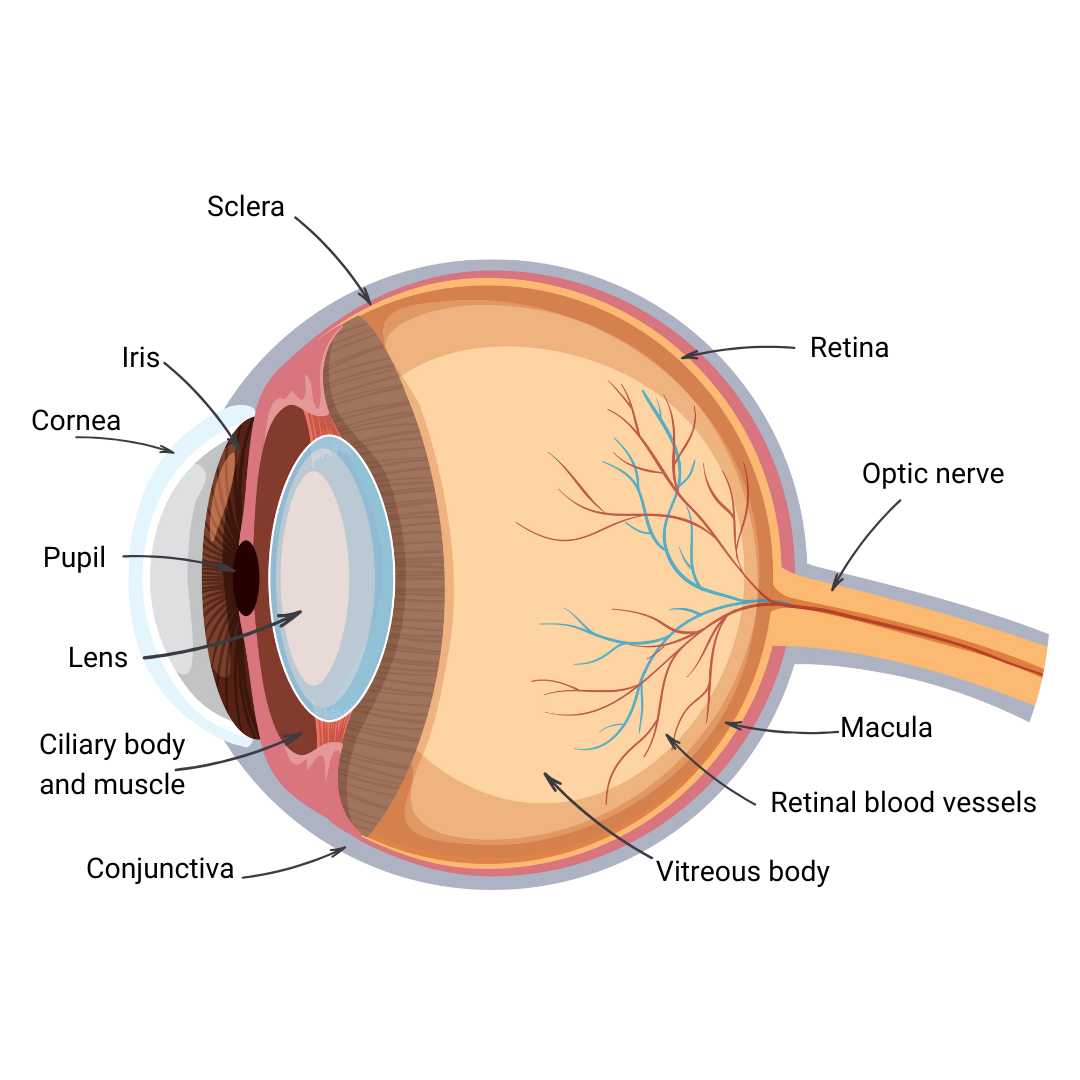Eye Health
A normal eye is shaped like a ball.
The cornea is a transparent structure found in the very front of the eye that helps to focus incoming light. Situated behind the pupil is a colorless, transparent structure called the crystalline lens which focuses the light on the retina at the back of the eye. The retina is the delicate innermost layer of tissue that lines the eye. It contains layers of light receiving cells called photoreceptors that are connected to the brain by the optic nerve.
If you think of the eye as a camera, the retina is the film on which images are recorded and the macula is the small, central part of the retina. The macula is very important and is responsible for what we see straight in front of us. It allows us to see fine detail for activities such as reading and writing, as well as giving us our ability to see colour.

Checking your vision
Regular eye checks with your Optician will pick up signs of most diseases so please do make sure that you keep up with your appointments, whatever your age.
Many people attend the Eye Casualty unit in Southampton because of accidents in the home (canes securing plants in the garden, not wearing goggles for household tasks using drills etc.). Please ensure that you protect yourself from these dangers by wearing goggles.
If you think you have distortion in your sight, please check by using the Amsler grid below. The grid on the left shows normal vision, the grid on the right shows vision when AMD is present. Cover one eye at a time and look straight at the black dot in the centre of the first grid. If any of the lines look wobbly or disappear, similar to the second grid, it is important you see an optician quickly as any visual problem needs to be addressed urgently.

Top tips for improving your eye health 
1. Eat a healthy diet rich in antioxidants, minerals and vitamins to help reduce the risk of eye diseases such as age-related macular degeneration.
- Leafy green vegetables like kale, broccoli and spinach are high in important carotenoids
- Orange-coloured fruits and vegetables like carrots, sweet potatoes and apricots are good sources of vitamin A.
- Almonds, avocados and sunflower seeds are rich in vitamin E
- Eggs are another good source of carotenoids
- Fish such as salmon, sardines, tuna and trout are high in omega-3 fatty acids
- Zinc helps protect the retina and can be found in beans, lean red meat and poultry.
2. Get regular check ups at the opticians. The earlier eye diseases are identified, the more likely treatment may be possible
3. Understand your family history of eye diseases so you can let your doctor or optician know, and take necessary precautions to lower your risk of developing these conditions. You may also be entitled to a free eye test in England, Wales and Northern Ireland. Find out if you have history of the following:
-
Age-related macular degeneration
-
Retinal degeneration
-
Glaucoma
-
Strabismus
-
Amblyopia
4. Exercise regularly. Good physical fitness leads to healthy blood sugar levels, which prevents chronic health conditions like diabetes. Diabetes increases your risk for eye diseases, such as diabetic retinopathy, cataracts and glaucoma.
5. Stop smoking. Smoking is proven to be harmful to your eye health, as well as your heart and lungs. It is a major risk factor for age related macular degeneration
6. Protect your eyes. Sunshine is lovely but please wear sunglasses to protect your eyes from damaging UV-A and UV-V rays. Wear protective eyewear when doing household tasks, like drilling and gardening to avoid injury.
7. Look out for any visual changes. If you experience any changes or distortion in your vision, it is important to see an optician quickly. Any vision problem needs to be addressed urgently.
Support Groups
If you have an eye condition, there are a number of excellent support groups who may be able to offer you help and advice, which can be invaluable to every day life. Here are some of the support groups we work with on a regular basis:
